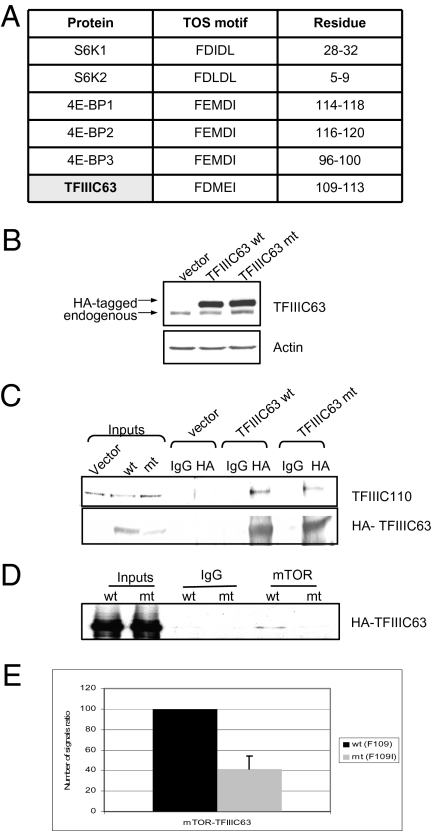Fig. 5.
TFIIIC63 contains a TOS motif that contributes to the interaction between TFIIIC and mTOR. (A) Sequence and location of a putative TOS motif in TFIIIC63 and comparison with TOS motifs in S6K and 4E-BP proteins. (B) Western blot analysis with antibodies against TFIIIC63 and actin of lysates from cells transfected with empty vector, vector encoding HA-tagged WT TFIIIC63 (wt), or vector encoding HA-tagged mutant (mt) TFIIIC63 carrying a F109I substitution. (C) Western blot analysis for TFIIIC110 and HA-TFIIIC63 coimmunoprecipitated with HA antibody or nonimmune IgG from cells transfected with vectors encoding HA-tagged WT TFIIIC63 (wt) or F109I mutant TFIIIC63 (mt). (D) Western blot analysis with HA antibody for HA-TFIIIC63 coimmunoprecipitated with mTOR antibody or nonimmune IgG from cells transfected with vectors encoding HA-tagged WT TFIIIC63 (wt) or F109I mutant TFIIIC63 (mt). (E) Quantification of the interaction between mTOR and transfected WT or mutant (F109I) TFIIIC63 as determined by PLA in three independent experiments. The signals were normalized to cell number, and the WT signal was arbitrarily assigned a value of 100.

